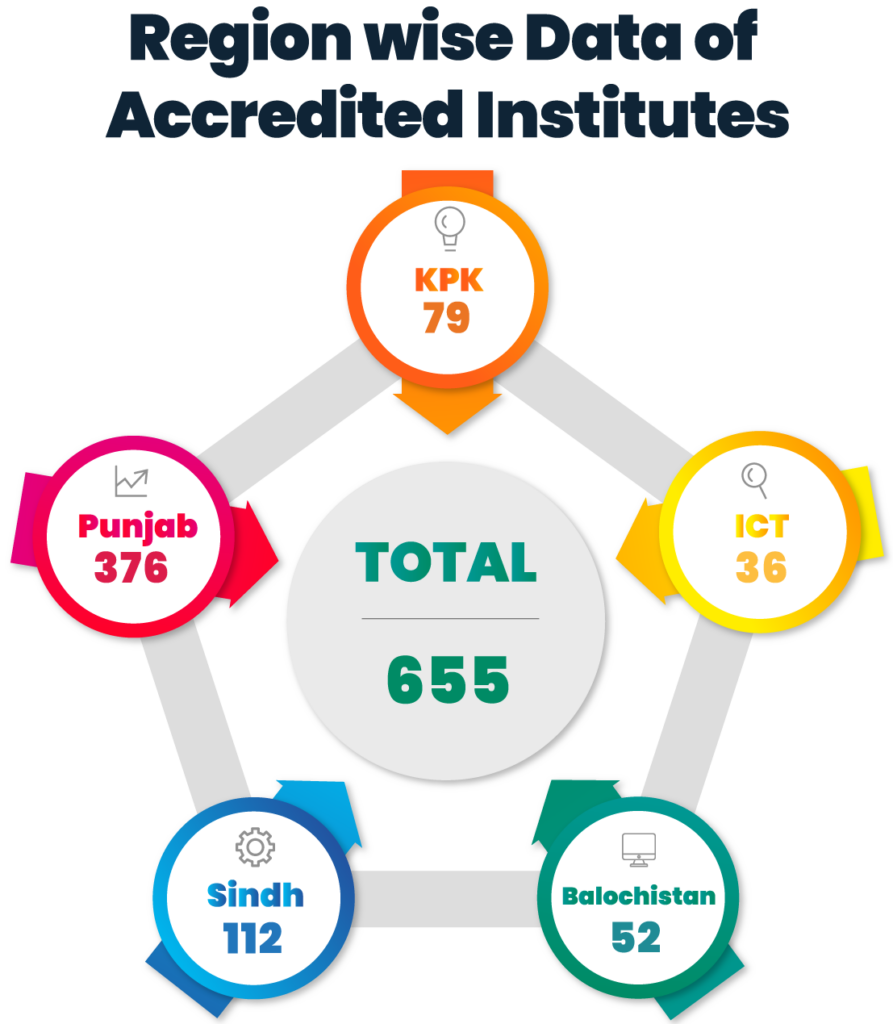Accreditation of TVET Institutes
Under PMYSDP, with an aim to transform Pakistani TVET sector institutes into modern, responsive, capable and productive institutes, NAVTTC is mandated with accreditation of TVET institutes as quality assurance mechanism. Accreditation provides a mechanism to ensure that TVET institutions meet prescribed standards in order to impart quality training. Accreditation fosters institutional reflection and evaluation of ongoing activities thus prompting review of strengths and weaknesses. Quality assurance of Technical Education and Vocational Training (TVET) Institutions through Accreditation bringing them at par with international standards of job market. NAVTTC employs accreditation as a tool to ensure continuous quality control process aimed at improving standards in technical education through developing benchmarks for technical institutions. The accreditation feedback provides institutions with clear and compelling direction for implementing changes to move forward towards excellence. NAVTTC has so far accredited around 655 institutes making significant progress towards quality assurance at the institute level in the skill development sector of the country.

Criteria for Institutes
Any Institute / Industry is eligible to apply for training program which meets following criteria of NAVTTC for accreditation:
- Institute / Industry will submit a comprehensive project proposal encompassing all technical & financial details on given proforma.
- Institute / Industry will provide the detailed mapping of potential employment / self-employment prospects for enrolled youth in market their Job placement, induction plan.
- Institute / Industry will provide the documentary evidence for demand analysis and their past contribution for the relevant sector in terms of employed / self-employed youth through tracer study.
- Institute which mandatorily have Job Placement and Career Counselling Cells.
- The grading of the institute shall be determined in accordance with NAVTTC’s prescribed SoPs based on technical capacity of an institute and the trades being offered.
- A Committee will be constituted at respective Regional Offices level to carry-out the assessment of institutes for rating categorization. The Committee may be flexible while scoring the institute in less developed area of the country.